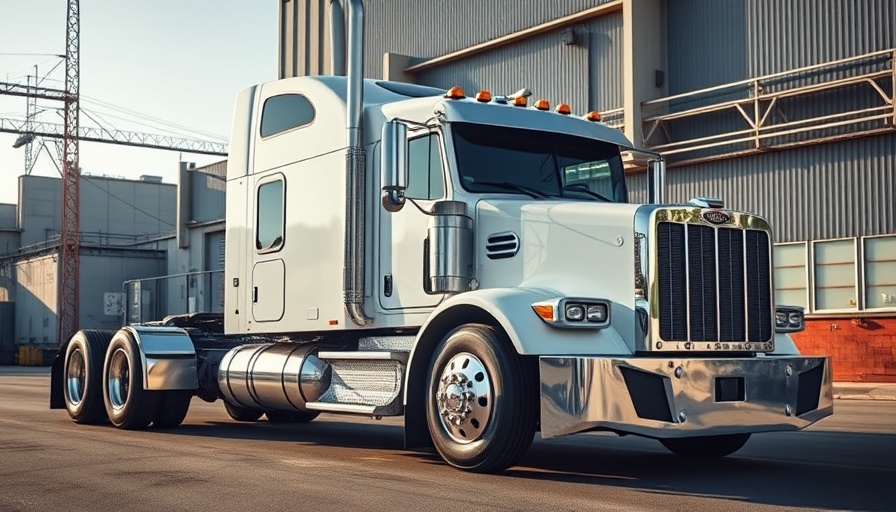
Introducing the Electric Power Revolution: Peterbilt’s Model 567EV
Peterbilt is making waves in the construction and heavy-duty vehicle market with the introduction of the Model 567EV, its first electric vocational truck. Tailored for industries that require utility trucks, dump trucks, and equipment haulers, this vehicle signifies an important step toward sustainability and cost efficiency in operations.
Why Electric? The Cost-Saving Advantage
Designed primarily for short-haul applications, the 567EV caters to businesses where range and idle time align well with electric vehicle capabilities. With a range generally capped at 250 miles and the ability to generate energy while parked via the electric Power Take-Off (ePTO), the Model 567EV is positioned to provide a genuine total cost of ownership (TCO) benefit. Peterbilt's Erik Johnson emphasizes that many operational fleets are looking to make the shift to electric - and for good reason. "Electricity can often be more cost-effective than diesel, making it a pragmatic choice for forward-thinking businesses," he notes.
The Shift to Sustainability: Meeting Zero-Emission Goals
As businesses in construction and related fields face increasing zero-emission pressures, the Model 567EV arrives at a crucial time. Businesses interested in sustainable practices can find common ground with legislation aimed at reducing vehicular emissions. Mitesh Naik from Peterbilt highlights how trucks like the 567EV can help companies meet stringent governmental regulations while still managing operational efficiency. This dual benefit of compliance and cost-saving makes the transition to electric more appealing.
Real-World Applications: Success Stories in Utility and Beyond
The versatility of the Model 567EV is particularly evident in its applicability across various sectors, including municipalities and construction sites. Concrete mixer operations, for example, stand to gain significantly by adopting electric trucks that allow for overnight charging after service. The operational efficiency and environmental impact offer a compelling narrative for business leaders aiming to modernize their fleets.
Future Trends: The Road Ahead for Electric Vocational Trucks
With the initial interest already apparent from utility and municipal fleets, the demand for electric vocational trucks is likely to grow. As costs for batteries decrease and charging infrastructure improves, experts anticipate a rapid uptick in electric truck adoption across more sectors within the commercial construction industry. Addressing both environmental concerns and economic considerations, the Model 567EV could very well lead the charge into a greener future for heavy-duty vehicles.
In closing, businesses in the commercial construction space have an opportunity to reassess their operational strategies with the advent of electric vehicle technology. The Model 567EV not only symbolizes innovation but also reflects a considerate approach to modernizing fleets for a sustainable future.
 Add Row
Add Row  Add
Add 




 Add Row
Add Row  Add
Add 

Write A Comment